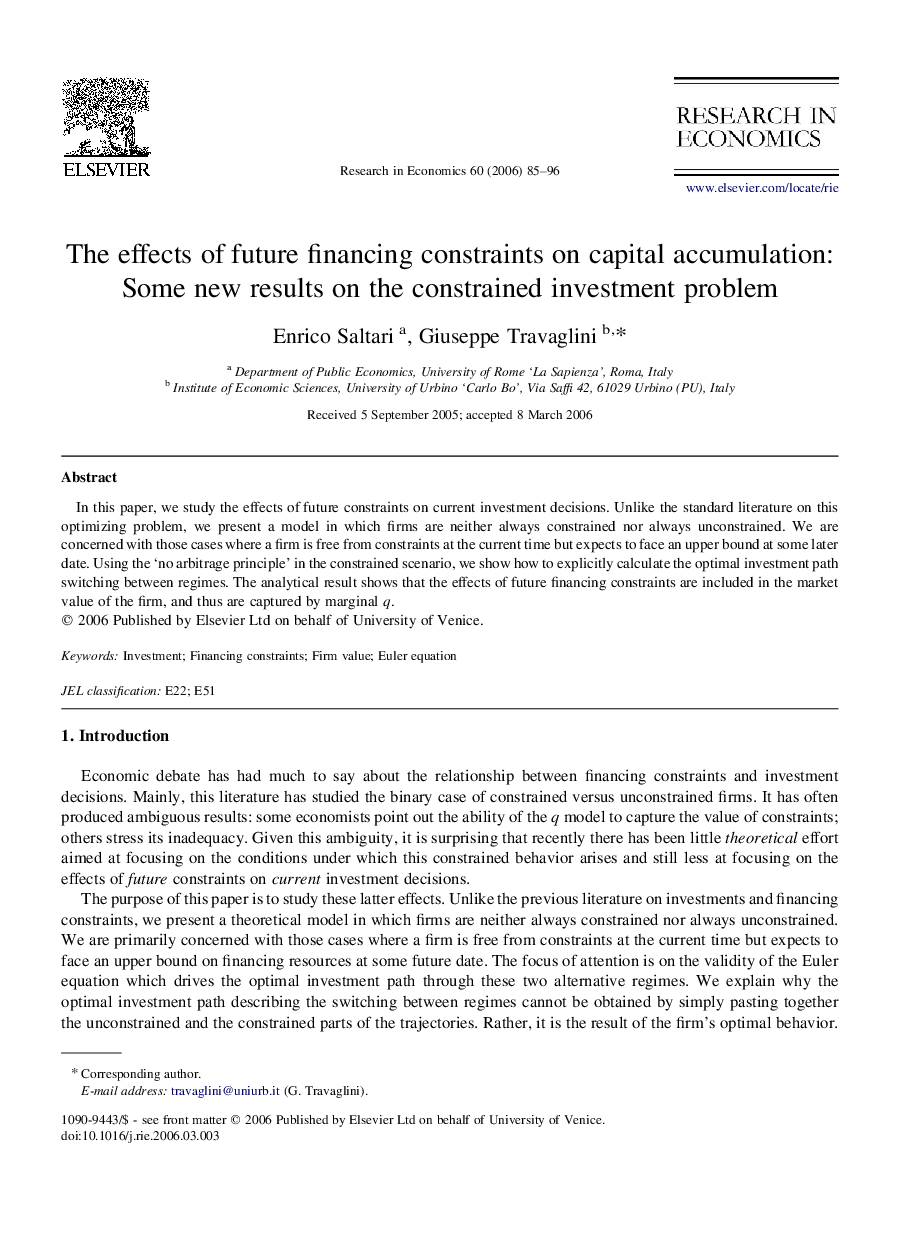| Article ID | Journal | Published Year | Pages | File Type |
|---|---|---|---|---|
| 984517 | Research in Economics | 2006 | 12 Pages |
Abstract
In this paper, we study the effects of future constraints on current investment decisions. Unlike the standard literature on this optimizing problem, we present a model in which firms are neither always constrained nor always unconstrained. We are concerned with those cases where a firm is free from constraints at the current time but expects to face an upper bound at some later date. Using the ‘no arbitrage principle’ in the constrained scenario, we show how to explicitly calculate the optimal investment path switching between regimes. The analytical result shows that the effects of future financing constraints are included in the market value of the firm, and thus are captured by marginal q.
Related Topics
Social Sciences and Humanities
Economics, Econometrics and Finance
Economics and Econometrics
Authors
Enrico Saltari, Giuseppe Travaglini,
